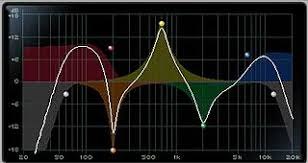在JavaScript中,有几种方式可以实现原型继承:
- 构造函数继承:通过调用父类的构造函数来创建子类的实例,并将父类的属性和方法复制到子类的实例中。这种方式只能继承父类的实例属性和方法,无法继承父类的原型属性和方法。
1
2
3
4
5
6
7
8
9
10
| function Parent(name) {
this.name = name;
}
function Child(name) {
Parent.call(this, name);
}
var child = new Child('Alice');
console.log(child.name);
|
- 原型链继承:将子类的原型对象指向父类的实例,从而实现继承父类的属性和方法。这种方式可以继承父类的实例属性和方法,也可以继承父类的原型属性和方法,但是所有子类的实例共享父类的属性和方法。
1
2
3
4
5
6
7
8
9
10
11
12
13
14
15
16
17
18
19
20
21
22
| function Parent(name) {
this.name = name;
}
Parent.prototype.sayHello = function() {
console.log('Hello, ' + this.name);
}
function Child(name) {
this.name = name;
}
Child.prototype = new Parent();
var child1 = new Child('Alice');
var child2 = new Child('Bob');
console.log(child1.name);
console.log(child2.name);
child1.sayHello();
child2.sayHello();
|
- 组合继承:结合构造函数继承和原型链继承的方式,既可以继承父类的实例属性和方法,也可以继承父类的原型属性和方法。但是这种方式会调用两次父类的构造函数,一次在创建子类的实例时,一次在将子类的原型对象指向父类的实例时。
1
2
3
4
5
6
7
8
9
10
11
12
13
14
15
16
17
18
| function Parent(name) {
this.name = name;
}
Parent.prototype.sayHello = function() {
console.log('Hello, ' + this.name);
}
function Child(name) {
Parent.call(this, name);
}
Child.prototype = new Parent();
Child.prototype.constructor = Child;
var child = new Child('Alice');
console.log(child.name);
child.sayHello();
|
- 原型式继承:通过创建一个临时的构造函数,将父类的实例作为临时构造函数的原型对象,然后返回这个临时构造函数的实例。这种方式类似于对象的浅拷贝,可以继承父类的属性和方法,但是所有子类的实例共享父类的属性和方法。
1
2
3
4
5
6
7
8
9
10
11
12
13
14
15
16
| function createObject(obj) {
function F() {}
F.prototype = obj;
return new F();
}
var parent = {
name: 'Alice',
sayHello: function() {
console.log('Hello, ' + this.name);
}
};
var child = createObject(parent);
console.log(child.name);
child.sayHello();
|
- 寄生式继承:在原型式继承的基础上,通过在临时构造函数中添加新的属性和方法,从而实现对父类的扩展。这种方式可以继承父类的属性和方法,并且可以添加新的属性和方法,但是所有子类的实例共享父类的属性和方法。
1
2
3
4
5
6
7
8
9
10
11
12
13
14
15
16
17
18
19
20
21
22
23
24
25
| function createObject(obj) {
function F() {}
F.prototype = obj;
return new F();
}
var parent = {
name: 'Alice',
sayHello: function() {
console.log('Hello, ' + this.name);
}
};
function createChild(parent) {
var child = createObject(parent);
child.sayHi = function() {
console.log('Hi, ' + this.name);
};
return child;
}
var child = createChild(parent);
console.log(child.name);
child.sayHello();
child.sayHi();
|
- 寄生组合式继承:在组合继承的基础上,通过创建一个临时的构造函数,将父类的原型对象复制到这个临时构造函数的原型对象上,然后将子类的原型对象指向这个临时构造函数的实例。这种方式可以继承父类的属性和方法,并且避免了调用两次父类的构造函数。
1
2
3
4
5
6
7
8
9
10
11
12
13
14
15
16
17
18
19
20
21
22
23
| function inheritPrototype(child, parent) {
var prototype = Object.create(parent.prototype);
prototype.constructor = child;
child.prototype = prototype;
}
function Parent(name) {
this.name = name;
}
Parent.prototype.sayHello = function() {
console.log('Hello, ' + this.name);
}
function Child(name) {
Parent.call(this, name);
}
inheritPrototype(Child, Parent);
var child = new Child('Alice');
console.log(child.name);
child.sayHello();
|
这些是常见的几种实现原型继承的方式,每种方式都有其优缺点,可以根据具体的需求选择适合的方式。






